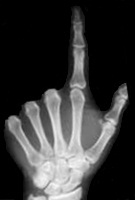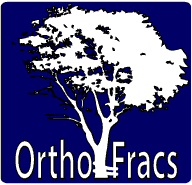Journal Club
April 2010
Should an Ulnar Styloid Fracture Be Fixed Following Volar Plate Fixation of a Distal Radial Fracture?
- Authors: Jae Kwang Kim, Young-Do Koh, Nam-Hoon Do
- Institution: Department of Orthopedic Surgery, Ewha Medical Research Institute, School of Medicine, Ewha Womans University, Seoul, South Korea
- Journal: J Bone Joint Surg Am. 2010;92:1-6
No outside funding
Reviewed by
Dr Josh Petterwood
MBBS | Accredited Orthopaedic Registrar
Introduction
- Null Hypothesis
- An un-repaired ulnar styloid fracture, regardless of fracture level or displacement, does not affect wrist function or distal radio-ulnar joint stability.
Methodology
- Prospective cohort study
- 2005 – 2007
- 149 consecutive patients with an unstable fracture distal radius
- 9 patients excluded
- 2 surgeons
- 2005 – 2007
- Operative
- ORIF Synthes volar locking plate in all
- No fixation of any accompanying ulnar styloid fracture
- Intraoperative assessment of DRUJ stability
- Unstable DRUJ
- Sugar tong splint in 30 degrees supination 4/52
- Stable DRUJ (???)
- Short arm splint 4/52
- Unstable DRUJ
- Postop
- Wrist ROM allowed at 4/52 with intermittent use of short arm brace for further 2/52
- Followup
- Mean follow up 19 months (12-36)
- Radiological Assessment of Ulnar styloid fracture
- Location
- Not fractured
- base
- non-base
- Displacement
- Non-displaced/minimally <2mm
- considerably >2mm
- Location
- Outcome Measures
- Radiographic
- Post-op vs final follow up
- Radial inclination,
- radial height,
- volar tilt,
- ulnar variance,
- joint congruity,
- healing status of ulnar styloid
- Post-op vs final follow up
- Ulnar styloid displacement
- Pre-op vs post op
- Pre-op vs post op
- Subluxation of DRUJ
- Intra-op
- Clinical
- Minimum follow up 1 year
- Wrist ROM
- Modified Mayo wrist score
- DASH
- DRUJ stability
- Wrist ROM
- Minimum follow up 1 year
- Radiographic
Results
- Ulnar styloid fracture
- 76/138 (55%)
- Location
- 47 base, 29 non base
- No impact on clinical outcome
- 47 base, 29 non base
- Amount of displacment
- 34 Mild /42 Considerable
- No impact on clinical outcome
- 34 Mild /42 Considerable
- Location
- 76/138 (55%)
- DRUJ stability
- 32 pts with intra-operative laxity
- Location
- 13 non #, 10 non base, 9 base
- No correlation
- 13 non #, 10 non base, 9 base
- Displacement
- 13 non #, 7 Minimal Displacement, 12 Considerable Displacement
- No correlation
- 13 non #, 7 Minimal Displacement, 12 Considerable Displacement
- Location
- 2 pts with chronic instability
- Both had intra-op laxity
- Asymptomatic
- No further intervention
- Both had intra-op laxity
- 32 pts with intra-operative laxity
- Radiological
- Ulna styloid displacement post ORIF radius
- Significant reduction in Considerable Displacment group (not Minimal Displacement group)
- Ulna styloid displacement post ORIF radius
- Ulnar styloid union
- 31/76 at final follow up
- Not dependent upon displacement or fracture level
- 31/76 at final follow up
Discussion
- Controversy surrounding
- Function
- DRUJ stability
- Function
- Studies demonstrating worse outcomes have mostly treated the distal radial fracture conservatively
- Cause of instability (and worse functional outcome) more likely the radial fracture itself and anatomical reduction and internal fixation solve this problem
- Intra-op DRUJ laxity did not correlate with ulnar styloid fracture
- Styloid fracture probably not an indicator of DRUJ stability
- TFCC reduces when radial fracture reduces and heals without operative intervention
Pros of Study
- Controlled against non-fracture
- Blinded assessment
- Both radiological and functional outcome measures
- Prospective
Cons of Study
- Follow up
- Subjective assessment of DRUJ stability
- Not enough power to assess chronic DRUJ instability
Take home message
- Ulnar styloid fracture may not play a significant role in outcome following distal radial fractures treated with volar locking plates
Webpage Last Modified:
10 August, 2010



